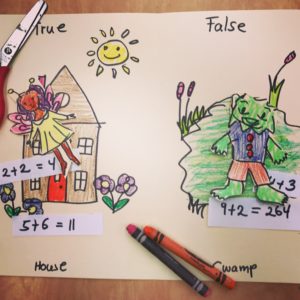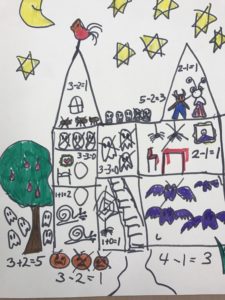
Math Sculptures are a great way to bring hands-on math into your classroom.
Materials:
- Linker cubes
- Paper
- Markers
- Stickers
Counting Collections
We usually start by distributing linking cubes. Our classrooms have a nice supply that came with our official district math program. We created counting collections that can be shared between classrooms. There are probably lots of ways to organize them. We just simply have them in a big bucket and hand out random fistfuls. Kids are allowed to get more or different colors if they need to.
Creating Sculptures
The kids love building with the cubes and come up with pretty interesting designs. Some kids simply create 3-dimensional patterns, others build animals or flowers. We don’t impose any rules other than not creating models of weapons.
Next, the kids have to take inventory. How many cubes did they use and how many of each color.
Creating Word Problems
Then comes the fun part. Creating math problems with the sculptures. This is the meat of the math sculptures concept lesson. Kids will use the sculptures to create their own math problems. The ability to manipulate the problem with the actual object is incredibly important to develop number sense.
Math Sculpture ExHibition
Last, the class has a math exhibition. We have half the class share and the other walk around and solve the different problems. Presenters give out stickers for each problem solved. The presenters then switch with the audience and this way everybody gets a turn.
Did you try it? Let us know in the comments below. For more fun and engaging hands-on math lessons click right here.


